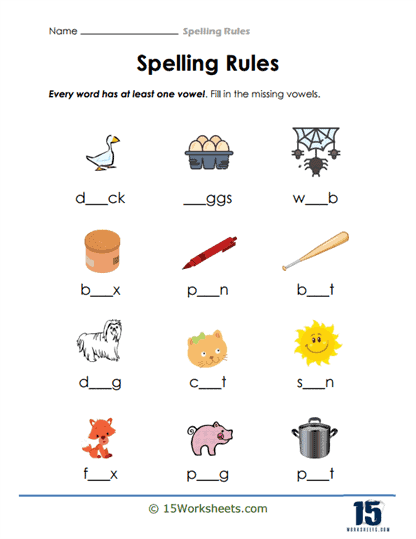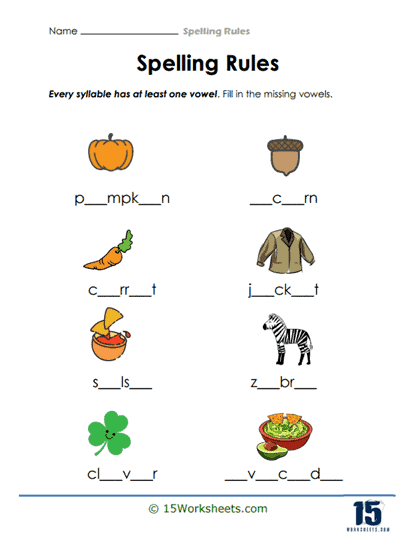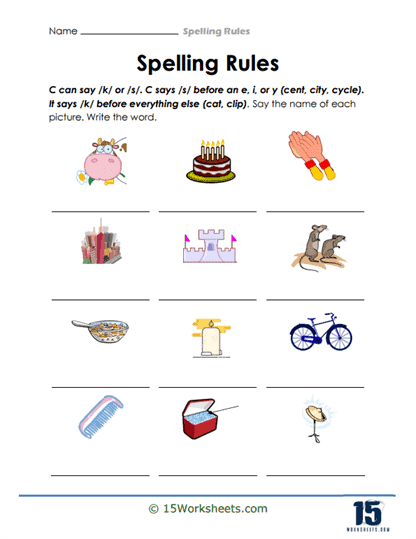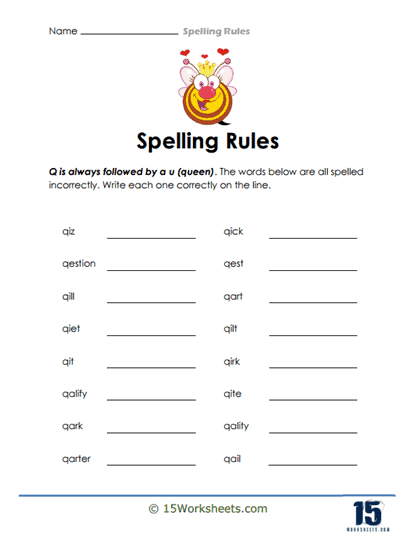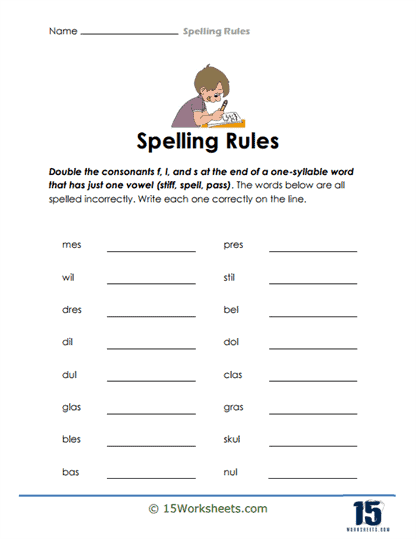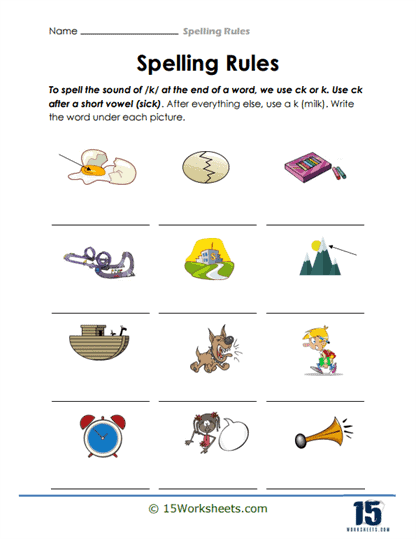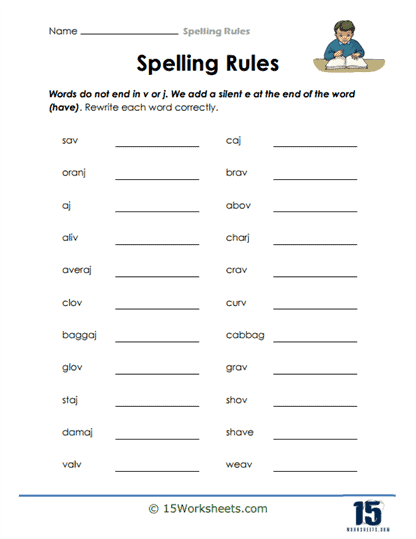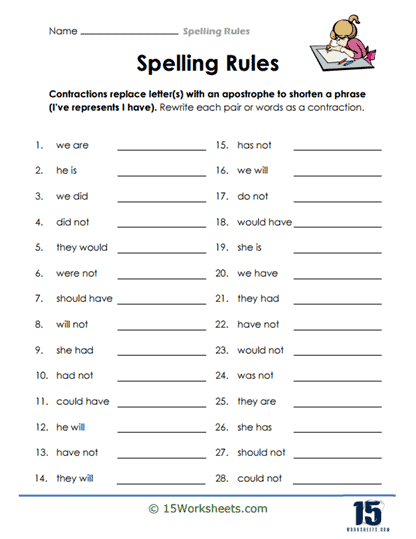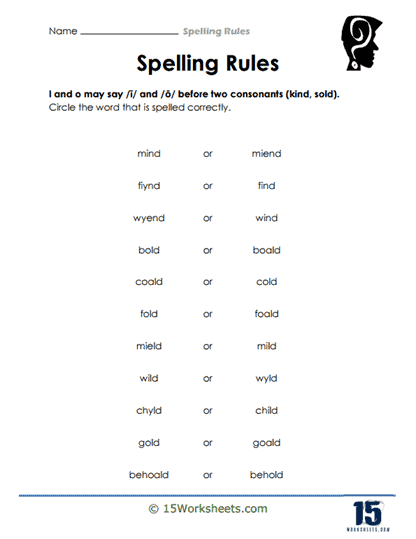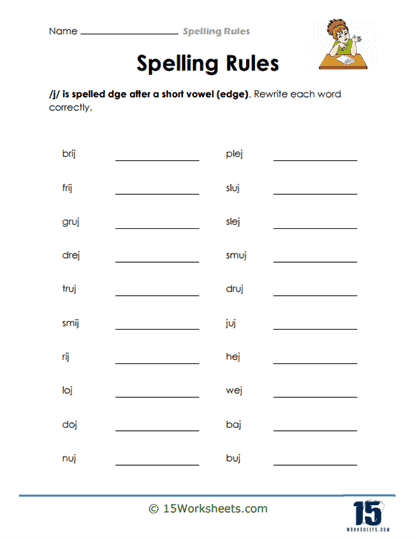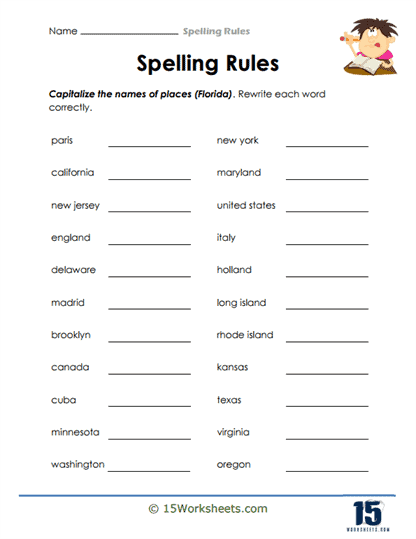Spelling Rules Worksheets
All About These 15 Worksheets
These worksheets were designed to help students learn, understand, and apply various spelling rules and patterns in the English language. These worksheets focus on specific rules that govern the way words are spelled, enabling students to recognize and apply those rules when encountering new words or when they are unsure of a word’s correct spelling.
These worksheets provide a structured and visual approach to learning, engaging students actively through hands-on exercises and repetition. They enable self-paced learning, allowing students to work independently and receive immediate feedback, fostering confidence in their spelling skills. By mastering these rules, students can apply their knowledge in their writing, ultimately improving their overall language proficiency. These worksheets are versatile tools for both teachers and students, aiding in differentiation, assessment, and the development of essential spelling skills.
Some common types of activities found in Spelling Rules Worksheets include:
Doubling Consonants – Students practice applying the rule for doubling consonants when adding suffixes, such as changing “hop” to “hopping” or “bat” to “batted.”
Silent “e” – Students learn when to drop or keep the silent “e” when adding suffixes, like changing “hope” to “hoping” or “write” to “writer.”
“I before E, except after C” – Students practice applying this classic rule, such as spelling “believe” or “deceive” correctly.
Plurals – Students learn and practice the different rules for forming plurals, including adding “-s” or “-es,” changing “y” to “ies,” or dealing with irregular plurals.
Prefixes and Suffixes – Students learn the spelling rules for adding prefixes and suffixes to root words, such as the correct spelling of “disappear” or “unbelievable.”
Homophones – Students practice differentiating between words that sound the same but have different spellings and meanings, like “their,” “there,” and “they’re.”
Comparative and Superlative Forms – Students learn the rules for forming comparative and superlative adjectives, such as adding “-er” or “-est” or using “more” or “most.”
This series of worksheets aim to help students build a strong foundation in spelling by understanding the underlying rules and patterns that govern the English language. Teachers can use these worksheets in the classroom to supplement their instruction, while parents can use them at home to reinforce spelling skills and help their children become more confident and proficient spellers.
What Are Common Spelling Rules?
Here are common spelling rules to help improve your spelling accuracy:
1. “i” before “e” except after “c” – Usually, “i” comes before “e” in a word (e.g., believe), except after “c” (e.g., receive). Exceptions include “weird” and “neither.”
2. Doubling Consonants – When adding a suffix to a one-syllable word that ends in one vowel followed by one consonant, double the consonant (e.g., “stop” becomes “stopping”).
3. Silent “e” Rule – When adding a suffix that starts with a vowel to a word ending in a silent “e,” drop the “e” (e.g., “hope” becomes “hoping”).
4. “Y” to “ies” – When a word ends in “y” preceded by a consonant, change the “y” to “ies” when making it plural (e.g., “baby” becomes “babies”).
5. “Y” to “i” – When adding a suffix that starts with a vowel to a word that ends in “y” preceded by a consonant, change the “y” to “i” (e.g., “happy” becomes “happiness”).
6. “Y” as is – When adding a suffix that starts with a consonant to a word that ends in “y,” keep the “y” (e.g., “joy” becomes “joyful”).
7. Plurals of words ending in “s,” “x,” “z,” “sh,” or “ch” – Add “es” to make these words plural (e.g., “box” becomes “boxes”).
8. Plurals of words ending in “y” preceded by a vowel – Simply add “s” (e.g., “toy” becomes “toys”).
9. “Q” always followed by “u” – In English, “q” is almost always followed by “u” (e.g., “queen,” “question”).
10. “C” vs. “K” – Use “c” before “a,” “o,” or “u,” and use “k” before “i” or “e” (e.g., “cat,” “kite”).
11. “C” and “G” soft and hard sounds – “C” and “G” generally have soft sounds before “e,” “i,” or “y” and hard sounds before “a,” “o,” or “u” (e.g., “gentle,” “guitar”).
12. Double “l” or “t” in British English – When adding a vowel suffix to a word ending in “l” or “t,” double the final consonant in British English (e.g., “travelled,” “labelled”).
13. “-able” vs. “-ible” – Use “-able” if the base word can stand alone without the suffix (e.g., “likable”) and “-ible” if the base word cannot stand alone (e.g., “credible”).
14. “A” vs. “an” – Use “a” before words that start with a consonant sound and “an” before words that start with a vowel sound (e.g., “a book,” “an apple”).
15. “Their,” “they’re,” and “there” – “Their” is a possessive pronoun, “they’re” is a contraction of “they are,” and “there” refers to a place or position.

